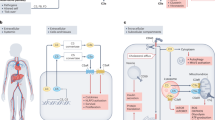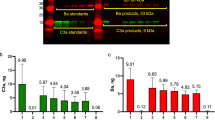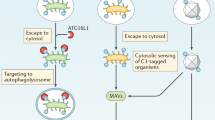Abstract
Complement-mediated tissue injury in humans occurs upon deposition of immune complexes, such as in autoimmune diseases and acute respiratory distress syndrome. Acute lung inflammatory injury in wild-type and C3−/− mice after deposition of IgG immune complexes was of equivalent intensity and was C5a dependent, but injury was greatly attenuated in Hc−/− mice (Hc encodes C5). Injury in lungs of C3−/− mice and C5a levels in bronchoalveolar lavage (BAL) fluids from these mice were greatly reduced in the presence of antithrombin III (ATIII) or hirudin but were not reduced in similarly treated C3+/+ mice. Plasma from C3−/− mice contained threefold higher levels of thrombin activity compared to plasma from C3+/+ mice. There were higher levels of F2 mRNA (encoding prothrombin) as well as prothrombin and thrombin protein in liver of C3−/− mice compared to C3+/+ mice. A potent solid-phase C5 convertase was generated using plasma from either C3+/+ or C3−/− mice. Human C5 incubated with thrombin generated C5a that was biologically active. These data suggest that, in the genetic absence of C3, thrombin substitutes for the C3-dependent C5 convertase. This linkage between the complement and coagulation pathways may represent a new pathway of complement activation.
This is a preview of subscription content, access via your institution
Access options
Subscribe to this journal
Receive 12 print issues and online access
$209.00 per year
only $17.42 per issue
Buy this article
- Purchase on Springer Link
- Instant access to full article PDF
Prices may be subject to local taxes which are calculated during checkout




Similar content being viewed by others
References
Abbas, A.K. Disease of immunity. in Robbins Pathologic Basis of Disease 6th edn. (eds. Cotran, R., Kumar, V. & Collins, T.) Ch 6, 188–260 (W.B. Saunders & Co., Philadelphia, 1999).
Kohl, J. & Gessner, J.E. On the role of complement and Fcγ-receptors in the Arthus reaction. Mol. Immunol. 36, 893–903 (1999).
Clynes, R. et al. Modulation of immune complex-induced inflammation in vivo by the coordinate expression of activation and inhibitory Fc receptors. J. Exp. Med. 189, 179–185 (1999).
Baumann, U. et al. A codominant role of FcγRI/III and C5aR in the reverse Arthus reaction. J. Immunol. 164, 1065–1070 (2000).
Hopken, U.E., Lu, B., Gerard, N.P. & Gerard, C. Impaired inflammatory responses in the reverse Arthus reaction through genetic deletion of the C5aR. J. Exp. Med. 186, 749–756 (1997).
Wang, Y. et al. Amelioration of lupus-like autoimmune disease in NZB/WF1 mice after treatment with a blocking monoclonal antibody specific for complement component C5. Proc. Natl. Acad. Sci. USA 93, 8563–8568 (1996).
Strachan, A.J., Shiels, I.A., Reid, R.C., Fairlie, D.P. & Taylor, S.M. Inhibition of immune-complex mediated dermal inflammation in rats following either oral or topical administration of a small molecule C5a receptor antagonist. Br. J. Pharmacol. 134, 1778–1786 (2001).
Heller, T. et al. Selection of a C5a receptor antagonist from phage libraries attenuating the inflammatory response in immune complex disease and ischemia/reperfusion injury. J. Immunol. 163, 985–994 (1999).
Baumann, U. et al. Distinct tissue site-specific requirements of mast cells and complement components C3/C5a receptor in IgG immune complex-induced injury of skin and lung. J. Immunol. 167, 1022–1027 (2001).
Ames, R.S. et al. Identification of a selective nonpeptide antagonist of the anaphylatoxin C3a receptor that demonstrates antiinflammatory activity in animal models. J. Immunol. 166, 6341–6348 (2001).
Humbles, A.A. et al. A role for the C3a anaphylatoxin receptor in the effector phase of asthma. Nature 406, 998–1001 (2000).
Sylvestre, D. et al. Immunoglobulin G-mediated inflammatory responses develop normally in complement-deficient mice. J. Exp. Med. 184, 2385–2392 (1996).
Weiser, M. et al. Reperfusion injury of ischemic skeletal muscle is mediated by natural antibody and complement. J. Exp. Med. 183, 2343–2348 (1996).
Hugli, T.E. Complement factors and inflammation: effects of α-thrombin on components C3 and C5. in Chemistry and Biology of Thrombin (eds. Lundblad, R.L., Fenton, J.W. & Mann, K.G.) 345–360 (Ann Arbor Science Publishers, Inc. Ann Arbor, Michigan, 1977).
Polley, M.J. & Nachman, R. The human complement system in thrombin-mediated platelet function. J. Exp. Med. 147, 1713–1726 (1978).
Wetsel, R.A. & Kolb, W.P. Expression of C5a-like biological activities by the fifth component of human complement (C5) upon limited digestion with noncomplement enzymes without release of polypeptide fragments. J. Exp. Med. 157, 2029–2048 (1983).
Ward, P.A. & Hill, J.H. C5 chemotactic fragments produced by an enzyme in lysosomal granules of neutrophils. J. Immunol. 104, 535–543 (1970).
HuberLang, M. et al. Generation of C5a by phagocytic cells. Am. J. Pathol. 161, 1849–1859 (2002).
Rawal, N. & Pangburn, M.K. Formation of high affinity C5 convertase of the classical pathway of complement. J. Biol. Chem. 278, 38476–38483 (2003).
Mulligan, M.S. et al. Requirement and role of C5a in acute lung injury in rats. J. Clin. Invest. 98, 503–512 (1996).
Larsen, G.L., Mitchell, B.C. & Henson, P.M. The pulmonary response of C5 sufficient and deficient mice to immune complexes. Am. Rev. Respir. Dis. 123, 434–439 (1981).
Larsen, G.L., Mitchell, B.C., Harper, T.B. & Henson, P.M. The pulmonary response of C5 sufficient and deficient mice to Pseudomonas aeruginosa. Am. Rev. Respir. Dis. 126, 306–311 (1982).
Barton, P.A. & Warren, J.S. Complement component C5 modulates the systemic tumor necrosis factor response in murine endotoxin shock. Infect. Immun. 61, 1474–1481 (1993).
Kyriakides, C. et al. Membrane attack complex of complement and neutrophils mediate the injury of acid aspiration. J. Appl. Physiol. 87, 2357–2361 (1999).
Czermak, B.J. et al. In vitro and in vivo dependency of chemokine generation on C5a and TNFα. J. Immunol. 162, 2321–2325 (1999).
Drouin, S.M., Corry, D.B., Hollman, T.J., Kildsgaard, J. & Wetsel, R.A. Absence of the complement anaphylatoxin C3a receptor suppresses Th2 effector functions in a murine model of pulmonary allergy. J. Immunol. 169, 5926–5933 (2002).
Wills-Karp, M. & Ewart, S.L. Time to draw breath: asthma-susceptibility genes are identified. Nat. Rev. Genet. 5, 376–387 (2004).
Walters, D.M., Breysse, P.N., Schofield, B. & Wills-Karp, M. Complement factor 3 mediates particulate matter-induced airway hyperresponsiveness. Am. J. Respir. Cell Mol. Biol. 27, 413–418 (2002).
Circolo, A. et al. Genetic disruption of the murine complement C3 promoter region generates deficient mice with extra hepatic expression of C3 mRNA. Immunopharmacology 42, 135–149 (1999).
Guo, R.F. & Ward, P.A. Role of C5a in inflammatory responses. Annu. Rev. Immunol. 23, 821–852 (2005).
Acknowledgements
This work was supported by US National Institutes of Health grants GM-29507, HL-31963 (to P.A.W.), GM-069438 (to J.G.Y.), DK-59422, AI-30040 and GM-069736 (to J.D.L.) and Deutsche Forschungsgemeinschaft grant HU823/2-2 (to M.H.-L.). We thank B. Schumann for secretarial assistance in preparation of the manuscript and R. Kunkel for assistance in preparing illustrations. We thank S. Albers for laboratory assistance. We thank A. Schmaier for suggestions regarding the prothrombin/thrombin studies and M. Carroll for supplying a second C3−/− strain of mice.
Author information
Authors and Affiliations
Contributions
M.H.-L., J.V.S., F.S.Z., S.M.D., R.L.W., M.A.F., D.R., L.M.H., R.A.W., S.R.M., T.A.N., J.G.Y. and P.A.W. contributed to animal models. J.V.S., F.S.Z., J.D.L. and T.A.N. contributed to ATIII and hirudin experiments. J.D.L. and F.G. contributed to thrombin experiments.
Corresponding author
Ethics declarations
Competing interests
The authors declare no competing financial interests.
Rights and permissions
About this article
Cite this article
Huber-Lang, M., Sarma, J., Zetoune, F. et al. Generation of C5a in the absence of C3: a new complement activation pathway. Nat Med 12, 682–687 (2006). https://doi.org/10.1038/nm1419
Received:
Accepted:
Published:
Issue Date:
DOI: https://doi.org/10.1038/nm1419
This article is cited by
-
ITRAQ-based proteomics analysis of human ectopic endometrial stromal cells treated by Maqian essential oil
BMC Complementary Medicine and Therapies (2023)
-
IgG immune complex-induced acute lung injury is ameliorated by cAMP via down-regulation of C/EBP- and AP-1-mediated transcriptions
Journal of Inflammation (2023)
-
A prospective phase 2 clinical trial of a C5a complement inhibitor for acute GVHD with lower GI tract involvement
Bone Marrow Transplantation (2023)
-
Genome-wide genotype-serum proteome mapping provides insights into the cross-ancestry differences in cardiometabolic disease susceptibility
Nature Communications (2023)
-
Pharmacokinetic analysis of vilobelimab, anaphylatoxin C5a and antidrug antibodies in PANAMO: a phase 3 study in critically ill, invasively mechanically ventilated COVID-19 patients
Intensive Care Medicine Experimental (2023)



